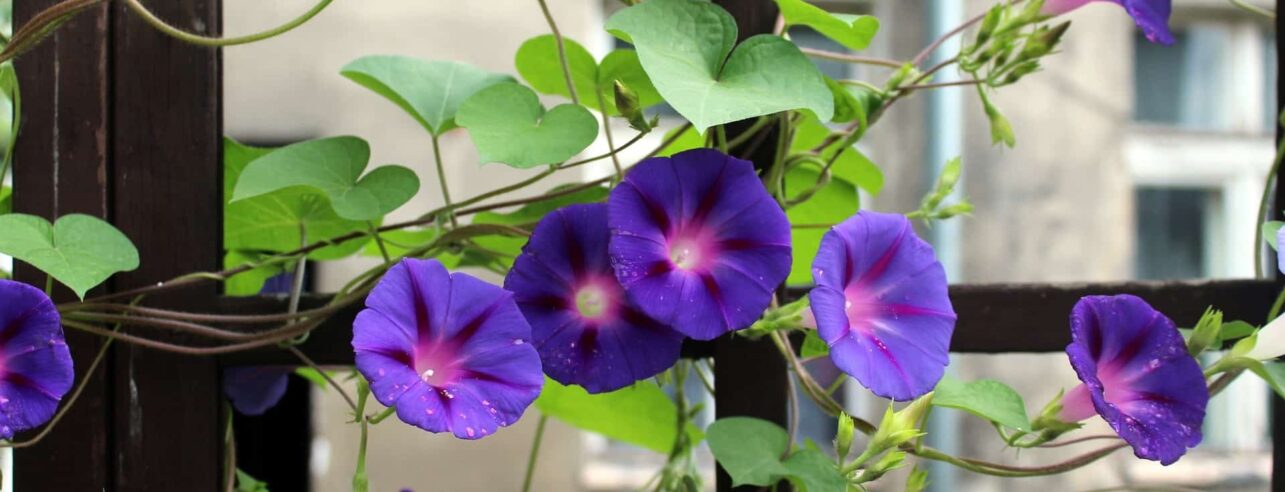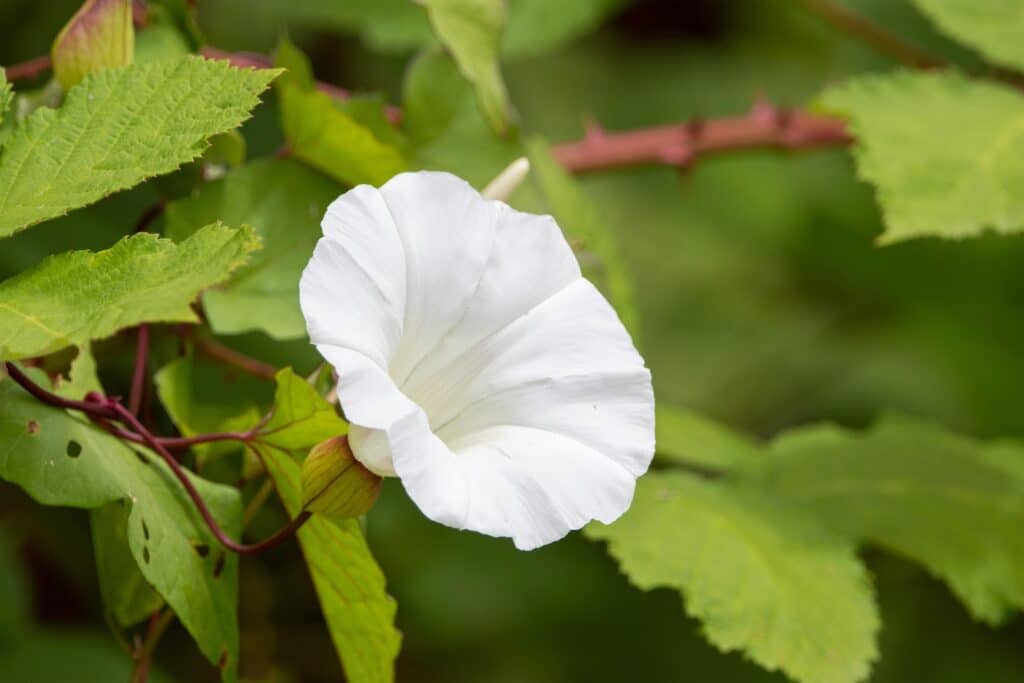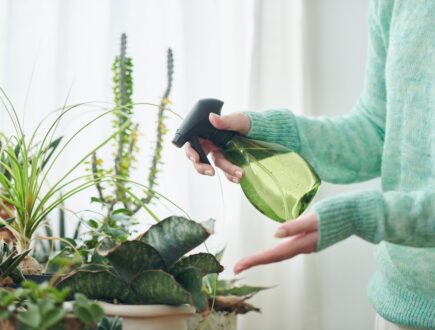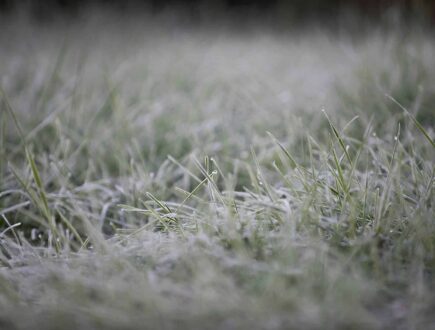Log in or create new account to save this product to your wishlist.

How to Get Rid of Bindweed
We are sharing our effective strategies for managing and getting rid of hedge bindweed and field bindweed, a common perennial weed in the UK.
🌱 All important maintenance moments for your lawn during the year. Leave your email and we will send you the lawn calendar for free.
Enter your email
Receive the lawn calendar in the mail
Enjoy a green lawn all year round!

- Order by 2PM = shipped today
- 250.000+ satisfied customers!
- 60 day satisfaction guarantee
Hedge bindweed and field bindweed are two types of perennial weeds that can pose a persistent challenge in gardens.
The more common and troublesome of the two is hedge bindweed, known scientifically as Calystegia sepium. This type of bindweed grows quickly, with thin, twisting stems and large white trumpet-shaped flowers. It has the potential to spread and form a dense layer of foliage, suffocating garden plants and hindering their growth, or even causing the demise of smaller plants.
On the other hand, field bindweed, scientifically named Convulvulus arvensis, has smaller pink or white trumpet flowers and is smaller in size and less vigorous overall. However, it is still a vine weed and can be problematic, particularly in areas with exposed soil.
What makes bindweed a concern?
Bindweed is notorious for its resilience and difficulty in eradication, especially when it is intertwined with other plants in a garden. This is due to its rapid-growing root system, which can penetrate through the roots of other plants.
Hedge bindweed is particularly troublesome as it can grow up to a metre in length each year, with stems reaching several metres in height. The roots of this species are fragile and can easily break, even the smallest fragment left in the soil has the potential to grow into a new plant.

While Field bindweed is less aggressive, it still poses the same challenge with its fragile roots and twisting stems.
How to get rid of bindweed without the use of chemicals
To effectively eliminate all perennial weeds, it is recommended to wait for 12-18 months before planting and cover the soil with a light-excluding material. As plants require sunlight to produce food, even the most resilient weeds will eventually die in the absence of light. Options such as weed control fabric, black polythene or old carpet can be used for this purpose. It is crucial to properly secure or bury the edges of the material to prevent any light from entering.
Vinegar can be used as a natural herbicide to kill bindweed. The acetic acid in vinegar disrupts the plant’s cell membranes, leading to its demise. Vinegar can help to weaken the plant and kill the leaves, but those pesky roots could still be a problem. This method is best used in conjunction with digging the roots out. The idea is to spray it onto the leaves and wait for them to wilt, but be careful because the vinegar will kill other plants too.
When faced with bindweed in beds and borders, the only effective solution is to remove the roots. It is best to do this during the winter or early spring, before the plants begin to grow. It is important to remove every bit of the root to prevent new plants from growing, and using a fork can help avoid breaking it up.
For cases where bindweed has intertwined with the root systems of established plants, the soil should be loosened on both sides of the roots to carefully extract the entire pieces. Dormant herbaceous perennials and ornamental grasses can be divided and the bindweed removed. During summer, if digging up the roots is not possible, other methods such as hoeing, cutting, or pulling off shoots can be used to weaken the growth. Additionally, chemical-free methods such as homemade weed killers and weed burners can also be used to kill the top growth and weaken the weed, but they will not eliminate the roots.
Getting rid of the roots
Do not dispose of bindweed roots in a compost bin as they can survive and spread in your garden when the compost is used. Instead, you can safely compost the roots by placing them in sturdy black plastic bags, such as old compost bags, and sealing the top to prevent light from entering. Leave the bag for at least a year before using the compost. You can also dispose of bindweed in your garden waste collection or take it to your local council recycling centre.

Using chemical herbicides
Due to its perennial nature, bindweed can only be effectively eradicated using the systemic herbicide glyphosate. This substance must be applied to the leaves, where it will then travel down to the roots as the bindweed continues to grow. Using other types of herbicides will only eliminate the above-ground growth, allowing it to easily regrow from its roots.
Glyphosate is available in various forms such as gel, ready-to-use spray, or concentrate, which can be diluted and applied using a personal sprayer. It is important to adhere to all safety guidelines when using glyphosate, as it has been associated with different types of human cancer. Many UK councils have prohibited its use for municipal purposes.
To effectively control bindweed, apply glyphosate only to the leaves from midsummer until early autumn. It is crucial to take precautions and prevent any contact with garden plants, as glyphosate is a potent weedkiller.
For gardens with bindweed growing among the plants, insert canes into the ground for the bindweed to climb on. Afterwards, gently remove the bindweed from the cane, place it in a transparent plastic bag (with its roots still attached), apply glyphosate, and seal the bag with a clothes peg. Keep the bag in place until the bindweed has completely died.

Dealing with bindweed in your garden can indeed be a daunting task, but with the right approach and persistence, it is possible to reclaim your garden space.
Learn how to identify more common weeds in the UK, and how to get rid of them!
And if you have any questions, you can always leave a comment or contact us, we’ll be happy to help.
Happy weeding!
-
Zero-Waste Gardening – This is How You Do It!Did you know that the average person wastes between 100 and 150 kilos of food every year? That's why the concept of zero-waste gardening is becoming increasingly important for environmentally conscious gardeners that like to do their gardening greener.Read more
-
How to Master Tree Pollarding: A Practical GuidePretty dense! What might be an insult to some, is certainly a compliment to trees. Through pollarding, you can make sure, your trees have a dense crown of beautiful leaves.Read more
-
Get Ready: Here are 5 Garden Trends for 2025Curious about the latest garden trends for 2025? From smart solutions to sustainable choices, discover all the outdoor trends that are transforming British gardens!Read more
-
How to Care for Plants in Winter: A Simple GuideWhen winter comes around, the care requirements of your plants change. Find out, how to adjust the care routine for your plants.Read more
-
Companion Planting Made Easy: A Step-by-Step TutorialStrategic plant partnerships can solve common gardening problems like pest invasion and disappointing yields. Find out which plants are great together in our companion planting guide.Read more
-
How to Grow Sweet Potatoes in Your GardenWant to know something splendid? A single sweet potato plant can produce 5 to 10 pounds (4.54 kg) of nutritious tubers—plenty to keep your family’s pantry well-stocked for weeks!Read more
-
Revive Your Lawn After Winter With These Easy StepsTired of winter lawn damage? Discover how to repair brown spots, remove weeds, and revitalise your grass for a thriving garden this spring.Read more
-
A Complete Guide On Lighting for Your House PlantsAchieve perfect lighting for houseplants! This guide covers light mapping, plant placement, and grow light tips to help your plants flourish indoors.Read more
Leave a comment
Your answer will be displayed on the site and the interested party will be notified by email.
Leave a comment
Have a question or want to share your experience? Leave us a comment.

- Order by 2PM = shipped today
- 250.000+ satisfied customers!
- 60 day satisfaction guarantee

- Order by 2PM = shipped today
- 250.000+ satisfied customers!
- 60 day satisfaction guarantee

🌱 All important maintenance moments for your lawn during the year. Leave your email and we will send you the lawn calendar for free.
Enter your email
Receive the lawn calendar in the mail
Enjoy a green lawn all year round!






















Comments (0)
There are no comments yet. Well then, what are you waiting for to
Be the first to write your comment!inaugurate this pretty page?
Do you have some comments?